Recent Articles
Popular Makes
Body Types
2018 Nissan Sentra Road Test and Review
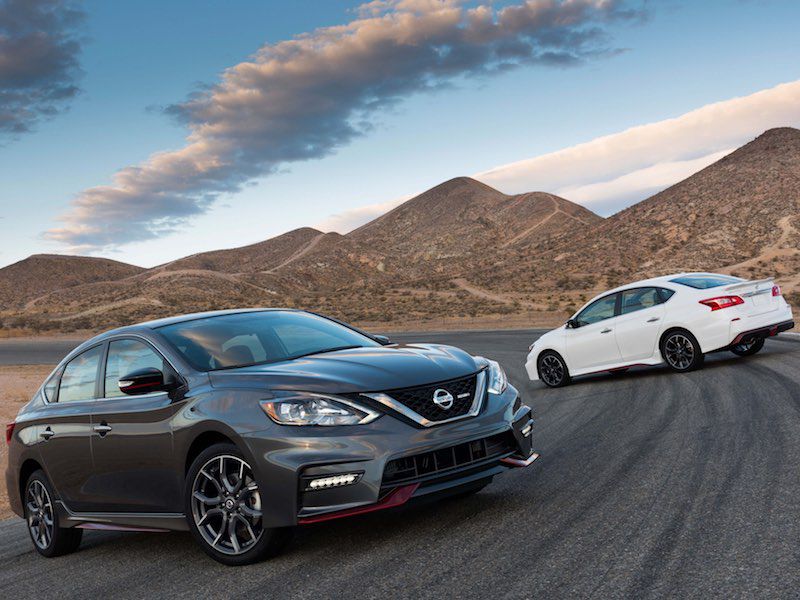
2017 Nissan Sentra NISMO gray and white ・ Photo by Nissan
Now in its seventh generation, the 2018 Nissan Sentra continues to be one of Nissan’s best-selling models, as well as one of America’s most popular compact sedans. The roomy four-door features one of the largest interiors in its class, and it continues to offer buyers a sporty driving experience combined with a reputation for reliability and durability.
Many Americans are driving their third and four Sentras, and this year Nissan has made improvements to the sedan’s already appealing package — adding standard safety features to all models, along with many standard features and luxuries to various trim levels. These changes increase the Sentra’s overall value equation and enhance its comfort and performance. The family-friendly Sentra, which is built in Mexico, competes against a long list of popular sedans, and it continues to stand out in a class that also contains the Honda Civic, Toyota Corolla, Volkswagen Jetta, Hyundai Elantra, and Chevrolet Cruze.
Many models to choose from.
Nissan offers the 2018 Sentra in six trim levels with base prices ranging from $17,875 to about $27,000, including an $885 destination charge. This means there’s a Sentra to satisfy most needs and budgets, and this expansive lineup is key to the sedan’s popularity. The base S model comes with a six-speed manual transmission, while a continuously variable (CVT) automatic transmission costs another $1,285. We recommend moving up to the SV, which gets you the automatic transmission as well as a long list of additional features including keyless entry, 16-inch wheels, dual-zone climate control, satellite radio, Bluetooth streaming audio, and a leather-wrapped steering wheel and shift knob. It also adds a front armrest, which doesn’t sound important, but it radically improves the comfort of a car, especially on long drives.
Every Sentra is front-wheel drive, and the S, SV, SR, and SL models are powered by a naturally aspirated 1.8-liter four-cylinder engine with 124 horsepower (or 130 hp in the S with the manual transmission). The top-of-the-line Sentra SL adds luxuries including leather upholstery, a power driver's seat, and heated front seats.
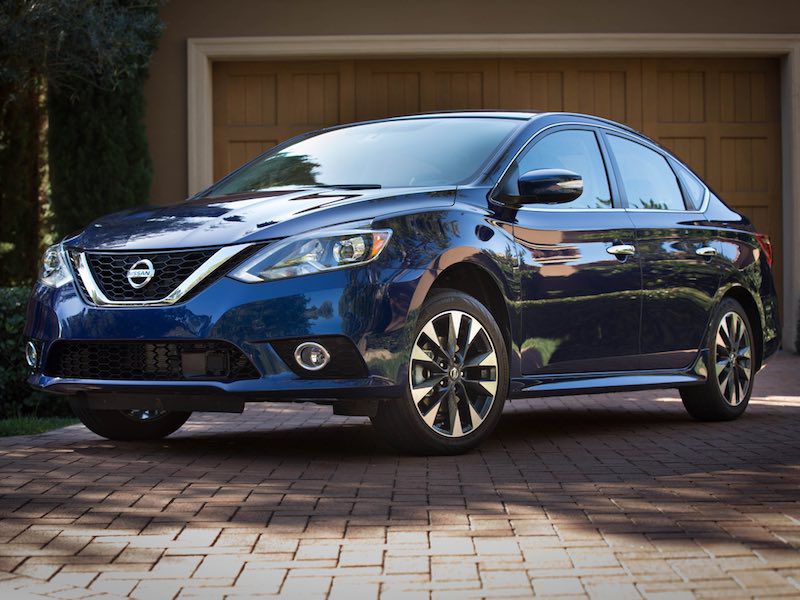
Photo by Nissan
Turbo Engine for Enthusiasts
Driving enthusiasts want the new Sentra SR Turbo model or the Sentra Nismo. These two performance models use a 1.6-liter turbocharged four-cylinder engine with 188 hp, which is strong for the class but still lags the power offered in the Honda Civic Si and Ford Focus ST. Both the Nismo and SR Turbo offer either a six-speed manual or a sport-tuned version of the CVT automatic transmission, and both get upgrades to their suspensions, steering systems, and front brakes. The SR Turbo starts at $22,085 with the six-speed manual, and the Nismo hits $26,500 with the CVT.
Nismo stands for Nissan Motorsports International. Think of it as an in-house tuner or hot-rod shop, like BMW’s M division, known for cars like the M3 and M5, or AMG at Mercedes-Benz. It has existed since 1984 and has been increasing the performance of street-legal Nissans for about 10 years. So far, the GT-R Nismo, Juke Nismo, 370Z Nismo, and Sentra Nismo have reached the American market in small numbers.
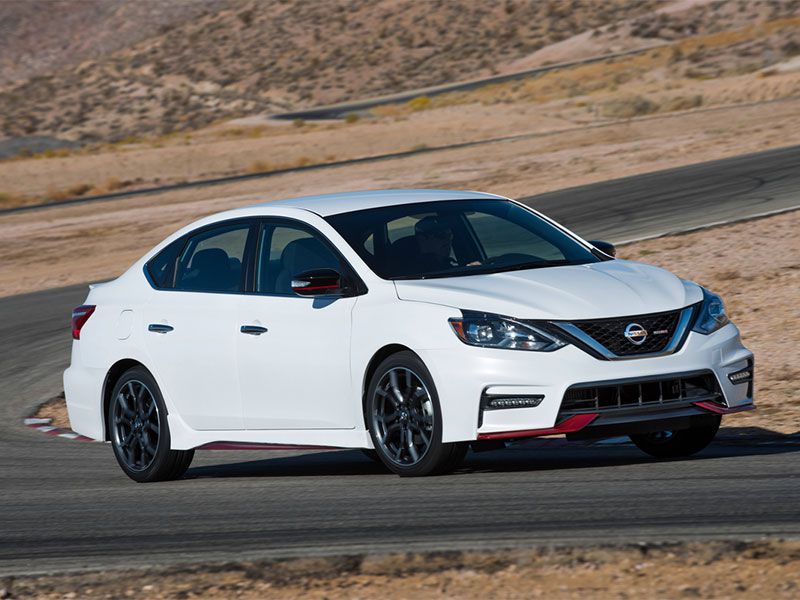
Photo by Nissan
Feels Solid on the Road
Our 2018 Nissan Sentra SL test vehicle proved extremely comfortable and easy to drive around Los Angeles. The 1.8-liter engine is powerful enough for most buyers, though it can get a bit rough at higher rpm, and the CVT automatic transmission is smooth. Also, the Sentra’s ride is comfortable, and I was impressed with its solid and substantial feel.
This is one of the larger cars in the compact sedan class, and you can feel it from behind the wheel. The Sentra doesn’t feel like a tin can or a bucket of bolts. On the highway, the interior is pleasingly quiet, and it’s comfortable on long runs thanks to a well-shaped driver's seat and a good driving position. Other sedans in this class do handle better than the Sentra due to its dated rear suspension design. However, the Nissan still likes to be tossed around, its steering has decent feel, and its brakes provide good stopping ability.
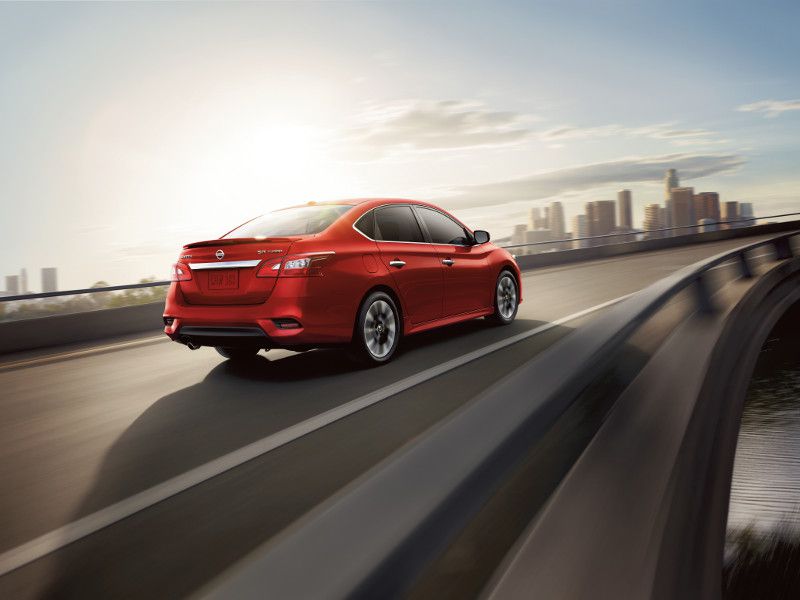
Photo by Nissan
Good Fuel Economy
The Sentra also gets good fuel economy. With its base engine, the EPA rates the Sentra at 29 mpg in the city and 37 mpg on the highway with the automatic transmission, and 27 mpg city and 35 mpg highway with the manual. In mixed driving in and around Los Angeles, I averaged 31 mpg. With the 188-hp turbocharged engine, the SR Turbo and Nismo are rated at 27 mpg in the city and 33 mpg on the highway.
Younger families will appreciate the Sentra’s easy-to-reach LATCH connectors in the outboard seats and easily accessed upper tether anchors. However, the 2018 Sentra has only been awarded four out of five stars from the National Highway Traffic Safety Administration, and it's not one of Insurance Institute for Highway Safety’s Top Safety Picks. Other cars in the class have better safety ratings. Some also offer better warranties. The Sentra’s three-year/36,000 mile bumper-to-bumper warranty and five-year/60,000-mile powertrain warranty is competitive in the class. However, the Hyundai Elantra and Kia Forte come with a five-year/60,000-mile bumper-to-bumper warranty and a 10-year/100,000-mile powertrain coverage.
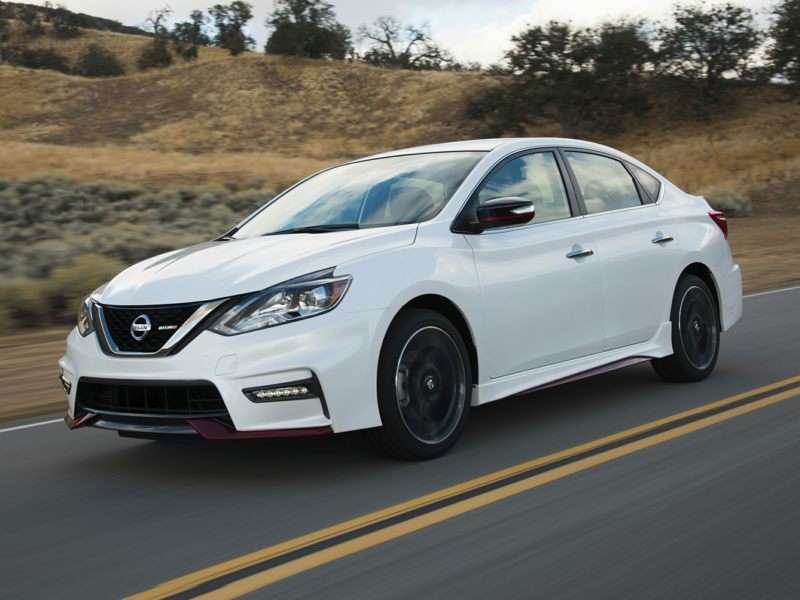
Photo by Nissan
Spacious Interior
With its long 106.3-inch wheelbase, the 2018 Sentra is spacious for a compact sedan. There’s real room for five with plenty of rear legroom for tall teenagers. Up front, Sentra drivers will appreciate the good visibility, height-adjustable seat, and tilting and its telescopic steering wheel. It’s easy to get comfortable in the Sentra. Control placement is excellent, and the quality of the materials used is very good. This is a high-quality interior, and it feels durable — like it can take some abuse and will look good years down years down the road if you treat it with some care.
Other cars in this class do have more modern interiors, but the Sentra SL is packed with features and its piano black trim looked upscale. I also like that Nissan puts a small piece of trim on many of the Sentra’s knobs and switches. Still, the Sentra Nismo’s interior is our favorite, with racing-style sport seats, a suede-covered steering wheel, and red stitching.
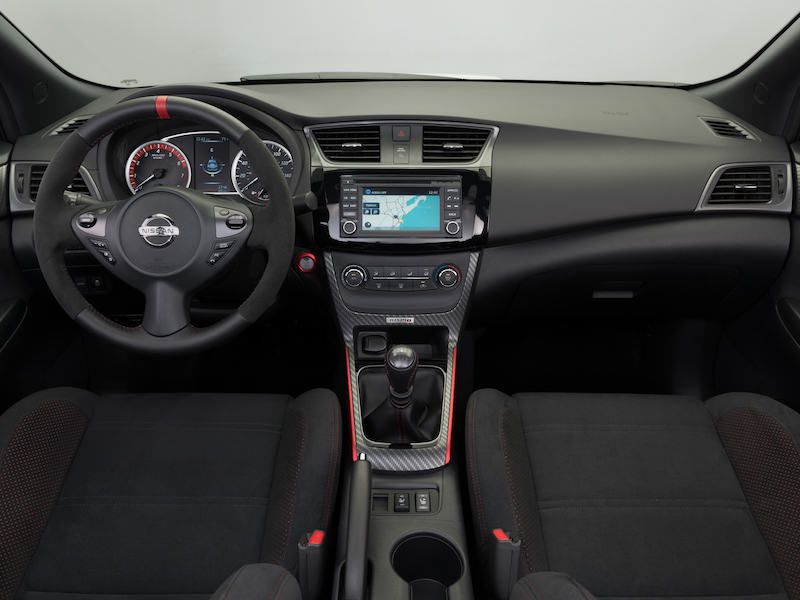
Photo by Nissan
Plenty of Cargo Space
Nissan’s designers have also given the 2018 Sentra plenty of interior cargo space. The sedan’s center console bin and door pockets are large, and there’s a cubby in front of the shifter to toss your phone. The Sentra’s two front cupholders are also well-sized and well-placed, but its two rear cupholders are integrated into the fold-down armrest, which occupies the center seat when in use.
The Sentra’s trunk space is also among the class leaders. With 15.1 cubic feet, it offers as much cargo space as many larger mid-size sedans. Plus, every Sentra comes with a 60/40 split folding rear seat. If you’re looking for even more cargo space, though, most of the Sentra’s competitors are also available as versatile hatchbacks, including the Subaru Impreza, Mazda3, and Chevrolet Cruze, while the Nissan is only a sedan.
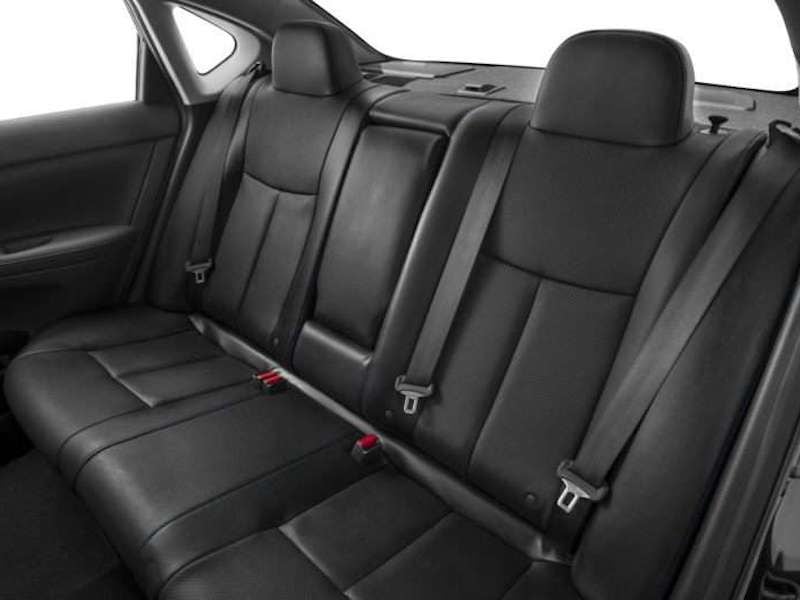
Photo by Nissan
Many Available Safety Systems
For 2018, every Nissan Sentra with an automatic transmission (except a Sentra Nismo) gets standard automatic emergency braking. Nissan also offers a blind-spot monitoring system with a rear cross-traffic alert, as well as adaptive cruise control, which can maintain a driver-dictated distance from the car in front of you.
Bluetooth is standard across the board, but there’s no onboard Wi-Fi, which is available in the Chevy Cruze. Also, the Sentra’s standard stereo display is only 5 inches, which is small even for this class. A slightly larger 5.8-inch color touchscreen is standard on Sentra SL and available on SV, SR, and Nismo. It comes with easy-to-use GPS navigation with traffic information, voice recognition, and mobile apps. Still, other sedans in the Sentra’s competitive set offer more in-cabin infotainment technology and features.
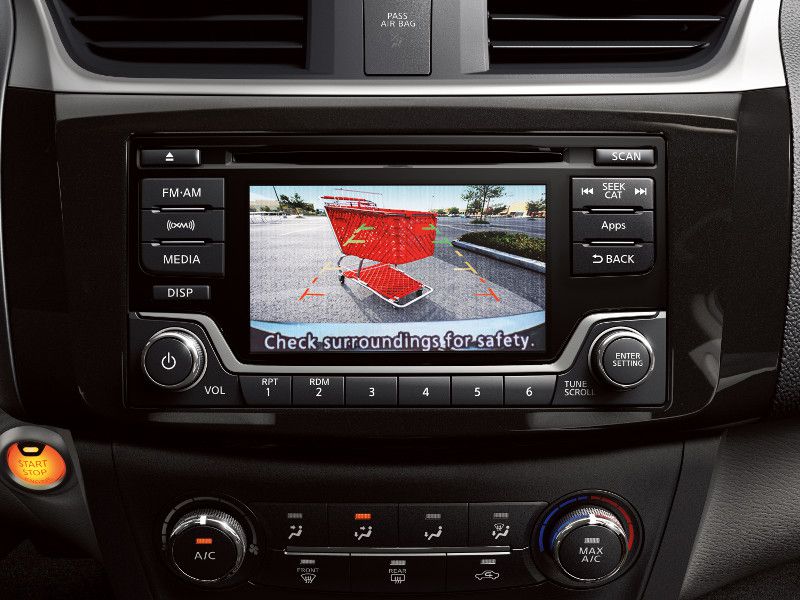
Photo by Nissan
Understated Design
The exterior design of the Nissan Sentra hasn’t changed much since 2013, and it’s starting to look a little dated compared to its more radically shaped competition. The 2018 Sentra is still attractive, but its overall shape just isn’t as sleek as some others in the compact class, most notably the Honda Civic and Mazda3. Even so, we do like its formal roofline and athletic curves.
The Sentra's aggressively sloped nose, V-shaped grille, and shapely fenders give it a pleasing face, but it’s a bit awkward from the rear, looking a little too tall and skinny. Due to its substantial size and long wheelbase, the Sentra can almost pass for a mid-size sedan, however, and I like the upscale look of its ample bright window trim. The best-looking Sentra models are the SR Turbo model and Nismo. They get larger wheels, lower body side sill extensions, and a rear spoiler, while the Nismo’s red accents and black grille add some unapologetic attitude.
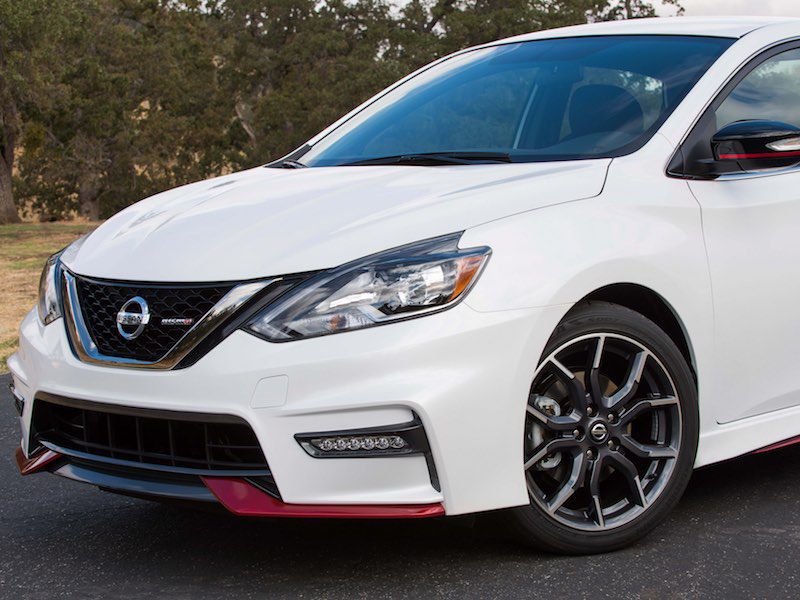
Photo by Nissan
Final Thoughts
Overall, the 2018 Nissan Sentra is a comfortable and family-friendly option in the very competitive compact sedan class. It remains a solid option for young families as well as young first-time car buyers thanks to its large interior, its huge trunk, and its long list of available features. There’s a lot of value here, and the additional features of the SR, SV, and SL trim levels are worth the extra cost.
Enthusiasts shouldn’t hesitate to step up to the SR Turbo trim level, with its sport-tuned suspension and 188-hp turbocharged engine. Although the 124 hp four-cylinder in the S, SR, SV, and SL is enough for most buyers, the additional performance that comes with the available turbocharged engine is worth the added cost and fuel usage.
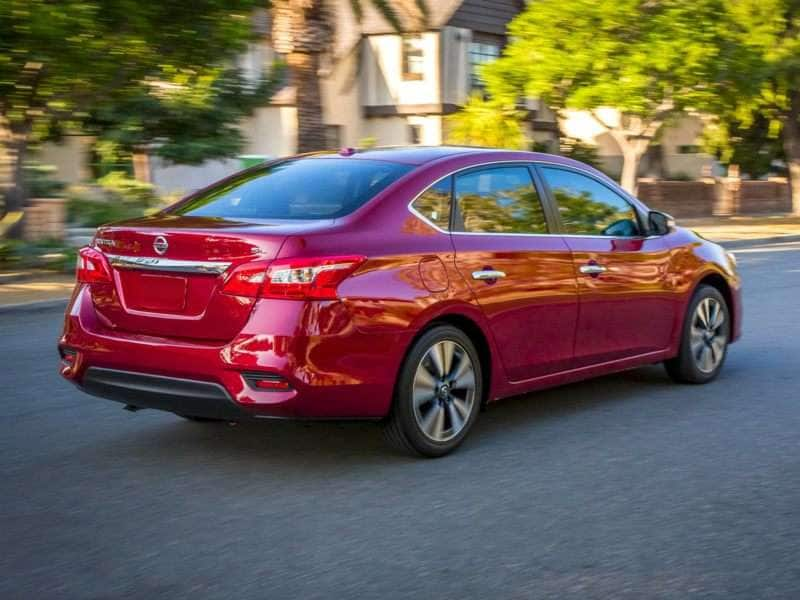
Photo by Nissan